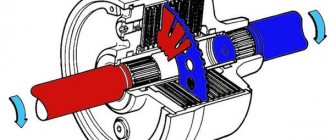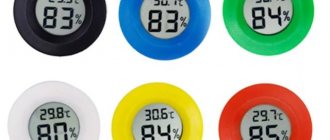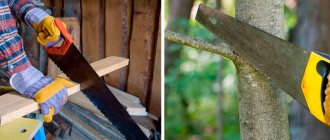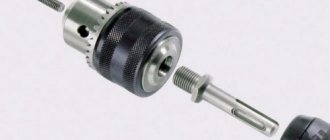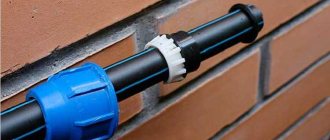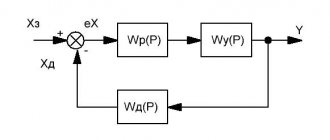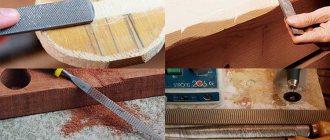In the previous article we talked about how to choose rifled carbines, and now let's talk about calibers for rifled weapons. What are they and their features. The choice of caliber depends on what goals you are pursuing - that is, the object of hunting, the method of hunting and the distance to the target. The types of weapons permitted on the territory of the Russian Federation are regulated by the Federal Law “On Hunting and the Conservation of Hunting Resources and on Amendments to Certain Legislative Acts of the Russian Federation” dated July 24, 2009 N 209-FZ. Be sure to study it so you know for sure which weapon you can use to hunt which animal. Also, pay attention to the demand for cartridges of the selected caliber. If you settle on not very popular ammunition, you may have problems with the purchase and you will have to constantly monitor your supplies.
Calibers are measured in mm or inches, depending on the country in which they are produced.
Standardization of caliber accuracy standards
The nominal dimensions of the gauges must correspond to the maximum dimensions of the part. The executive dimensions of calibers are the maximum dimensions by which new calibers are made and the wear of calibers in service is checked.
For plugs, indicate the largest maximum size and manufacturing tolerance “minus”, and for staples - the smallest maximum size with a tolerance “plus”.
For working pass-through gauges, the maximum size of the worn gauge is additionally indicated.
The executive dimensions of the calibers are determined by algebraically summing the maximum size of the product with the corresponding maximum deviation.
Depending on the degree of wear, calibers are divided into:
- new – working calibers;
- partially worn – controller calibers;
- worn to the established limit - acceptance gauges.
N – tolerance for the manufacture of gauges for holes;
Нs – tolerance for the manufacture of gauges with spherical measuring surfaces (for a hole);
H1 – tolerance for the manufacture of shaft gauges;
HP – approval for the manufacture of a control gauge for the staple.
Y – permissible output of the size of the worn-out pass gauge for the hole
Y1 – permissible output of the size of the worn-out pass-through gauge for the shaft.
Reference level
The control level type A72577-14 GOST 3059-75 is intended for checking the sighting devices of artillery guns when preparing them for firing.
The control level consists of body 1 (Fig. 7) and tube 3, connected by axis 2; in the tube there is a frame 4 of the ampoule with an ampoule 5, which are fixed in the tube with plaster and stopper 6; The control level is adjusted using the 8 regulating and 7 clamping screws.
At the checked control level, the clamping screw should be screwed in with a noticeable tightness, at which it is impossible to turn these screws with your fingers.
Rice. 7. Control level:
1 - body; 2 - axis; 3 - tube; 4 — ampoule frame; 5 — level ampoule; 6 - clamping screw
Manual mechanical sprocket
A manual mechanical star is designed to measure the internal diameters of barrels and cylinders of artillery gun recoil devices with an accuracy of 0.01 mm.
The star consists of a measuring head and a reading device connected by pipes, a set of pins and mounting brackets.
The measuring head consists of a grenade 24 (Fig. 10), crackers 4 with 3 pins, a wedge 5 and springs 2 with 1 mounting screws
The reading device consists of a handle 14, a slider 13 with a scale, a screw 12 with a thumb 27, a slider stopper 26 and a thumb 15 with a vernier 16; The slider on the handle is fixed with a stopper 26.
Crackers with pins are pressed by springs to the inclined surfaces of the wedge, and the wedge is connected to a movable vernier 16 by rods 7 → 11.
The diameter of the hole being measured is determined by the distance between the extreme points of the pins, and the distance to the area where the diameter is measured is determined by the scale on the outer elbow pipe and grenade.
To measure the internal diameter of gun and mortar barrels or cylinders of recoil devices, it is necessary to insert a sprocket inside the barrel (cylinder) and, by pulling the rods by the wing, determine the diameter of the barrel bore (cylinder) using the scale of slider 13 and vernier 16 of the rod.
Since the sprocket wedge has a taper of 1:5, each small division of the slider, equal to 1 mm, corresponds to an increase or decrease in the distance between the ends of the pins by 0.2 mm.
Rice. 10 Manual mechanical sprocket:
1 — fastening screw; 2 - spring; 8 - pin; 4 - cracker; 5 - wedge; guide ring; 7 — thrust of the 1st knee; 8 - screw; 9 — clutch screw; 10 — traction coupling;
11 — head rod; 12 - screw; 13 — slider; 14 — handle; 15 - lamb; 16 - cone; 17 - screw; 18 — handle; 19 — thrust of the 2nd knee; 20 - conical pin; 21 — hinge;
22 - axial screw; 23 — grenade head; 24 - grenade; 25 - outer ring; 26 — slider stopper; 27 - lamb
The reading accuracy of each vernier division is 0.05 mm; therefore, each vernier division indicates an increase or decrease in the distance between the ends of the pins (i.e., the measured diameter) by 0.01 mm.
A device for measuring the length of the charging chamber
A device for measuring the length of the charging chamber (PZK device) is designed to determine the length of the charging chamber of an artillery gun barrel in order to determine the drop in the initial velocity of the projectile by the amount of elongation (wear) of the charging chamber of the gun barrel.
The PZK device consists of a main rod 8 (Fig. 11) with two extensions 9 and a rammer.
The following are attached to the rod: a replaceable measuring ring 2, a tube 7 with a replaceable guide disk 6, a thrust ring 3 and a safety ring 4; the measuring ring is held by nut 1, and the guide disk by nut 5.
The rammer is designed to provide the same measuring force when measuring the length of the barrel's charging chamber. It consists of a rod 11, a sleeve 17, a thrust sleeve 16, a handle 14 and a spring 13; There is a mark on the rod, which makes it possible to provide a constant measuring force of about 20 kgf. A hammer 18 and a ring 10 are attached to the rod, limiting the movement of the hammer; The knocker is designed to remove the PZK device from the barrel after the measurement is completed.
Rice. 11. Device for measuring the length of the charging chamber:
1 - nut; 2 - measuring ring; 3 - thrust ring; 4 - safety ring; 5 - nut; 6 — guide disk; 7 - tube; 8 — main rod;
9 — extension; 10 - ring; 11 — rod; 12 - screw; 13 - spring; 14 — handle; 15—vitn; 16 — thrust bushing; 17 — sleeve; 18 — knocker; a - risk
For groups of guns (individual guns) there are sets of PZK devices from No. 1 to 15, which differ in the sets of replaceable measuring rings, guide disks and the number of extensions; sets of sets of measuring rings and guide disks are given in the Appendix Sets of measuring rings and guide disks in sets of PZK devices.
The diameters (dimensions) of the measuring rings and guide discs used for each gun are indicated in the shooting tables for a given gun.
Guide rings and measuring disks for some implements are included in the group spare parts kit.
Quadrant with mechanical level
The GOST 10908-75 quadrant is intended for checking sighting devices when preparing a gun for firing and for measuring gun elevation angles with an accuracy of 0-00.5 protractor divisions.
The quadrant consists of a frame 9 (Fig. 9) with two mutually perpendicular support platforms 8 and 11.
A toothed sector 10 is attached to the frame with screws for installing a guide arc 15. On both sides of the sector there is a scale with divisions: on one side from 0 to 7-50, on the other - in the opposite direction from 7-50 to 14-75.
Rice. 9. Quadrant with mechanical level:
1 — level mandrel; 2 — level cover; 3 — level adjusting screws; 4 — locking screws; 5 — rod with indicator;
6 — pointer index for counting angles on a sector scale; 7 — arc scale; 8, 11 — support platforms; 9 — frame; 10 — gear sector;
12 — gear flywheel; 13 — engine index for counting divisions on the arc scale; 14 — engine; 15 — guide arc; 15 — arc axis with screw
The guide arc is pivotally connected to the frame by an axis 16 with a screw. An engine 14 with a level 1 mandrel attached to it moves on the arc. By turning the guide arc on the axis, the level can be set at an angle to the horizontal. The inclination of the arc is fixed by the stop of the rod indicator 5 on the teeth of the sector. When you press the rod with your fingers, the rod compresses the spring and disengages with the gear sector. In this position, the guide arc can be freely rotated on its axis. After pressing stops, the stop, under the action of a spring, engages with the sector and fixes the position of the guide arc.
The guide arc is made with a slight curvature, due to which the slider, moving along it, changes the position of the level axis by a certain angle. The amount of change in the inclination of the level axis with a fixed rod is counted on a scale of 7, marked on the arc opposite the index 13, located on the beveled edge of the engine window. The scale is marked in the range from 0 to 0-25 divisions of the protractor with a division value of 0-00.5. For greater precision in moving the engine along the guide arc, use a 12-gear handwheel.
The teeth of the sector are made in such a way that when the rod is moved from one tooth of the arc to the adjacent one, the inclination of the level axis changes by 0-25 divisions of the protractor.
Readings on the scales on the sector are made using indices 6 marked on the cheeks of the rod stop on both sides. When setting the guide arc to the zero division and the index 13 to the zero of the scale 7, the axis of the level will be parallel to the surface of the supporting platform 11.
The level ampoule has transverse marks on top. When taking measurements, the level bubble should be located between the middle marks (Fig. 9, view along arrow A). To adjust the level there are screws 3 and locking screws 4.
Control mortar quadrant KM-1
The control mortar quadrant KM-1 52-I-013 is designed to check the installation of sights on mortars.
Quadrant KM-1 consists of body 1 (Fig. 8), on which there are marks a (index) for setting angles on the scale of ring 3, and strip 9; a disk 2 with a level 5 is attached to the body, which is kept from free rotation by a nut 6 with a washer in,
Rice. 8. Control mortar quadrant KM-1:
1 - body; 2 — disk; 3 - ring; 4 - 8 - washer; 9 — bar; a - risk
